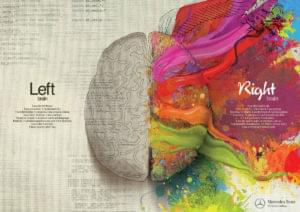Times are changing…fast. So fast, in fact, that often web and graphic designers forget that certain symbols or icons that they place in designs may no longer be recognizable nor relevant. Symbols that one generation recognize immediately may be completely unknown to younger users. Like me, you may remember a time when everyone had a home telephone, used 1.44 MB disks for data storage, and played audio cassette tapes in your car. However, these, like so many other icons that designers mistakenly use, should be long gone. Especially in web design and software programs, using the right icons is of utmost importance. Icons are often used in mobile or web design as navigation buttons to add appeal, or used as buttons for tools in software programs. But, if the symbols used are no longer valid or meaningful, then they will make your design look old fashioned. Even worse, irrelevant symbols could create usability problems for users that don’t understand the symbolic representation. So, take a look at the following list of ten outdated icons that you should probably exclude from your designs. Make sure that none of these — except in very specific situations — show up in your designs, and you will be much more likely to maintain your reputation as a modern, forward-thinking designer.
1.) 3.5 Inch/ 1.44 MB Floppy
2.) Clipboards
3.) Paint Palettes
4.) File Cabinets
5.) Road Signs
6.) Telephones
7.) Audio Cassette Tapes/ CDs
8.) Tape Recorder/ Recording Machines
9.) Headphones
10.) Outdated Machines
As quickly as technology evolves, you probably will want to review your use of certain icons every few years. When new technology emerges, it is only a matter of time before the old version is no longer in use. Can you think of anymore icons/symbols that designers should avoid today?
Frequently Asked Questions (FAQs) about Outdated Symbols in Design
Why is it important to exclude outdated symbols from my designs?
Outdated symbols can confuse or mislead your audience, especially if they are not familiar with the symbol’s original meaning. For instance, younger generations may not understand the significance of a floppy disk icon for saving files. Using outdated symbols can also make your design look dated and unprofessional. It’s crucial to keep your designs current and relevant to ensure they resonate with your target audience.
What are some examples of outdated symbols?
Some examples of outdated symbols include the floppy disk for saving, the telephone for calling, the envelope for mail, and the film reel for movies. These symbols are based on objects that are no longer in common use, making them potentially confusing for younger audiences.
How can I replace outdated symbols in my designs?
You can replace outdated symbols with more modern and universally understood icons. For example, instead of a floppy disk, you could use a cloud icon to represent saving files. It’s important to choose symbols that are instantly recognizable and relevant to your audience.
Are there any exceptions where using outdated symbols is acceptable?
Yes, there can be exceptions. For instance, if you’re designing for a specific demographic that is familiar with the outdated symbols, or if you’re creating a retro or vintage design, using outdated symbols can add to the aesthetic and appeal of your design.
How can I stay updated with the latest design symbols?
You can stay updated by following design blogs, attending design conferences, and participating in design communities. These platforms often discuss the latest trends in design symbols and icons.
What is the impact of cultural differences on symbol interpretation?
Cultural differences can significantly impact how symbols are interpreted. What is considered a common symbol in one culture may be unknown or have a different meaning in another. Therefore, it’s important to consider the cultural context of your audience when choosing symbols for your design.
How can I test the effectiveness of the symbols I use in my designs?
You can test the effectiveness of your symbols through user testing. This involves presenting your design to a sample of your target audience and gathering feedback on their understanding and interpretation of the symbols used.
Are there any resources for finding modern symbols to use in my designs?
Yes, there are many online resources for finding modern symbols, such as icon libraries and design websites. These platforms offer a wide range of symbols in various styles that you can use in your designs.
How often should I update the symbols in my designs?
There’s no set rule for how often you should update your symbols. However, it’s a good practice to regularly review your designs to ensure they remain relevant and effective. If a symbol is no longer understood or relevant to your audience, it’s time to update it.
Can I create my own symbols for my designs?
Yes, you can create your own symbols. However, it’s important to ensure that they are clear and easily understood by your audience. You may also need to provide some form of explanation or key for less intuitive symbols.
 Tara Hornor
Tara HornorTara Hornor has a degree in English and has found her niche writing about marketing, advertising, branding, graphic design, and desktop publishing. She is a Senior Editor for Creative Content Experts, a company that specializes in guest blogging and building backlinks. In addition to her writing career, Tara also enjoys spending time with her husband and two children.


